Joan MIRÓ was born in Barcelona on April 20, 1893. After studying at the Escola de la Llotja and the Academia Gali in Barcelona, Miró worked as a freelance artist from 1915. From 1920 he traveled regularly to Paris and moved to the French capital in 1921. There he met many fellow artists, became involved with Dadaism, Fauvism and Cubism, and joined the Surrealist circle of artists around André Breton. In 1928 Miró presented his works at the Georges Bernheim Gallery in Paris. This exhibition made Miró known as a painter. In 1930 Miró was able to show his works for the first time in New York at the Valentine Gallery. From 1935 to 1938, several international exhibitions of Surrealist works followed. During the Second World War Miró retreated to Mallorca and lived temporarily in Montroig and Barcelona. In 1947 he took part in the Surrealist exhibition at the Galerie Maeght, which represented him in Europe from then on. That same year, the artist visited the U.S. for several solo exhibitions, including a retrospective at the Museum of Modern Art in New York. In 1954, Miró’s works were shown in an exhibition in Germany for the first time and he was awarded the Grand Prize for Graphic Arts at the Venice Biennale. In 1956 the artist moved his main residence to Mallorca. He built a large studio and founded the Fundació Joan Miró in Barcelona in 1971. Miró’s paintings are characterized by a simplistic formal language and a strong use of color. The artist developed his own style from the 1930s onwards. From 1940 to 1948 he created numerous sculptures, graphics, ceramics and murals. His cheerful and whimsical works, created in the 1940s and 1950s, established Miró’s worldwide fame. The painter, graphic artist and sculptor is one of the most famous representatives of classical modernism. Joan Miró died on December 25, 1983 in Palma de Mallorca. 1960 — first exhibition participation, 1983 — first solo exhibition at Galerie Welz.
Joan MIRÓ was born in Barcelona on April 20, 1893. After studying at the Escola de la Llotja and the Academia Gali in Barcelona, Miró worked as a freelance artist from 1915. From 1920 he traveled regularly to Paris and moved to the French capital in 1921. There he met many fellow artists, became involved with Dadaism, Fauvism and Cubism, and joined the Surrealist circle of artists around André Breton. In 1928 Miró presented his works at the Georges Bernheim Gallery in Paris. This exhibition made Miró known as a painter. In 1930 Miró was able to show his works for the first time in New York at the Valentine Gallery. From 1935 to 1938, several international exhibitions of Surrealist works followed. During the Second World War Miró retreated to Mallorca and lived temporarily in Montroig and Barcelona. In 1947 he took part in the Surrealist exhibition at the Galerie Maeght, which represented him in Europe from then on. That same year, the artist visited the U.S. for several solo exhibitions, including a retrospective at the Museum of Modern Art in New York. In 1954, Miró’s works were shown in an exhibition in Germany for the first time and he was awarded the Grand Prize for Graphic Arts at the Venice Biennale. In 1956 the artist moved his main residence to Mallorca. He built a large studio and founded the Fundació Joan Miró in Barcelona in 1971. Miró’s paintings are characterized by a simplistic formal language and a strong use of color. The artist developed his own style from the 1930s onwards. From 1940 to 1948 he created numerous sculptures, graphics, ceramics and murals. His cheerful and whimsical works, created in the 1940s and 1950s, established Miró’s worldwide fame. The painter, graphic artist and sculptor is one of the most famous representatives of classical modernism. Joan Miró died on December 25, 1983 in Palma de Mallorca. 1960 — first exhibition participation, 1983 — first solo exhibition at Galerie Welz.

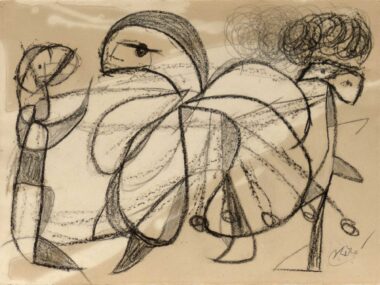

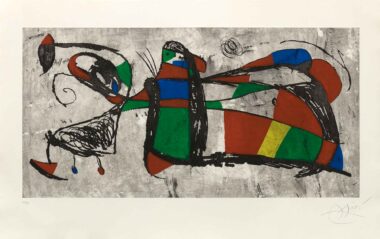
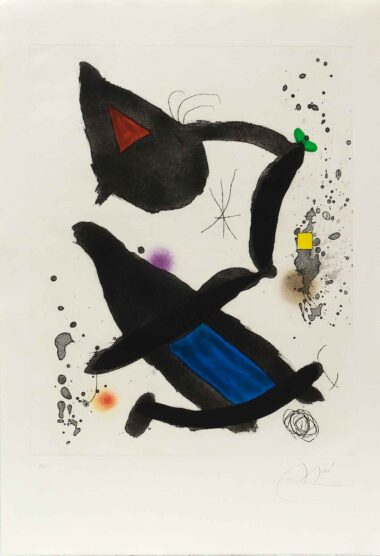
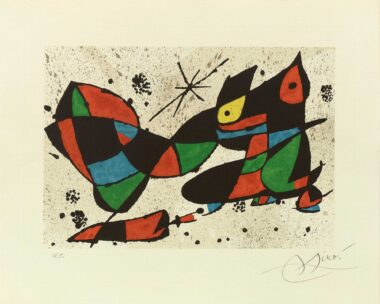

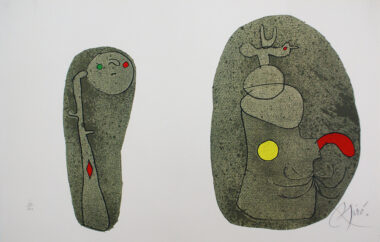
Recent Comments